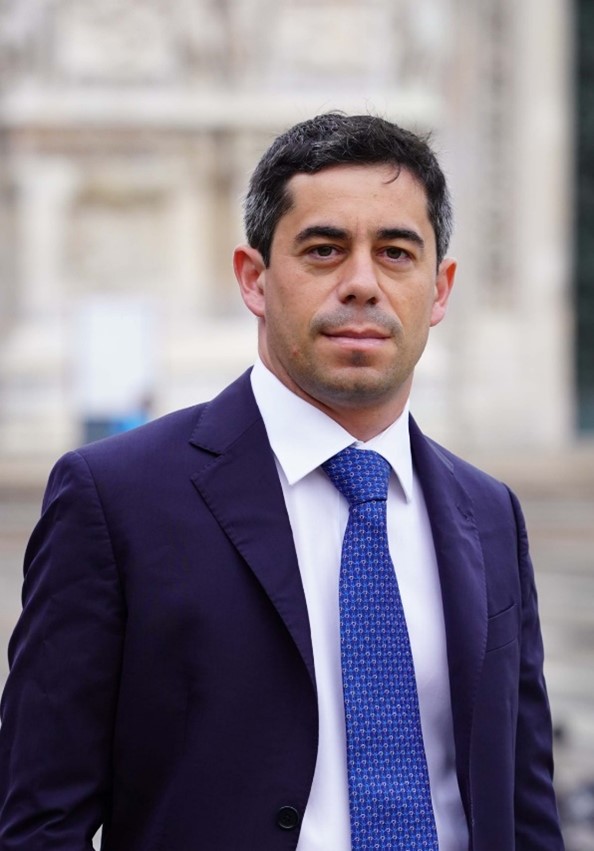
Diana Rossi — Global AI Compliance, Industrial Integrity, and the Post-MBA Pivot to Governance Leadership
Diana Rossi, Global AI Governance & Applications Lead at Solenis, expert interview on the NOVA blog provides a compelling narrative demonstrating the evolving strategic value of an MBA in the Industrial (r)Evolution. Ms. Rossi transitioned from e-commerce growth for massive global consumer brands, including Amazon and Johnson & Johnson, to a digital transformation and governance role, shaping value creation in private equity–owned industrials.
This shift underscores a fundamental requirement for executive leadership in the age of autonomous systems: the ability to marry the agility of digital strategy with the methodical rigor of governance. The MBA from NYU Stern School of Business served as the bridge between these domains, equipping her with a cross-functional perspective that connects strategy, technology, finance, and ethics. Let's see what Diana has to say!
**
Q1: You successfully managed digital acceleration for consumer giants like Amazon and Johnson & Johnson. Your current role demands the methodical rigor of industrial compliance and operational integrity. How did your MBA training specifically equip you to shift your strategic focus from maximizing growth velocity to optimizing risk mitigation and process integrity at Solenis?
DR: The MBA equipped me to move from driving innovation in consumer companies to leading innovation in a context that requires much more structure, discipline, and operational rigor. Earlier in my career the priority was speed — launching new features quickly, testing at scale, and optimizing for growth. In my current role, innovation has a different meaning: it must integrate with complex industrial processes, respect strict operational constraints, and support long-term reliability. The MBA helped me make this transition by strengthening my foundations in strategy, operations, and risk management. It taught me to evaluate innovation not only for its ability to accelerate growth, but for its impact on process, organizational readiness, and long-term value creation. This allows me to balance ambition and prudence and to guide innovation in a way that is both forward-looking and operationally sound
Q2: Successful AI initiatives necessitate robust cross-functional coordination across silos—Legal, Data Science, Security, Operations, and Business Units. As a Global Manager, what specific leadership style or communication strategy derived from your MBA experience is most effective when aligning stakeholders who often have competing priorities—for example, the Data Scientist focused on optimizing model performance versus the Legal Counsel prioritizing adherence to intellectual property laws and new regulations?
DR: One of the most valuable leadership lessons from my MBA was how to drive alignment in environments where stakeholders have different incentives. The approach that works best for me is a structured, transparent communication style grounded in shared objectives and decision-making frameworks.
When I lead cross-functional teams, I start by making the trade-offs explicit: what matters for Legal, what matters for Data Science, what matters for Operations, and how each priority connects to the broader strategic goal. Instead of debating from individual perspectives, we anchor decisions around a common outcome — safety, efficiency, customer value, or strategic differentiation.
The MBA strengthened my ability to translate complex topics into business language that each function understands. This helps me mediate between conflicting priorities, such as technical performance vs. regulatory requirements, and turn potential friction into collaboration. My leadership style is facilitative: I create clarity, establish shared metrics, and ensure every function sees how their contribution fits into the larger innovation effort.
Q3: Effective AI governance requires translating abstract ethical principles—such as accountability, fairness, and safety—into quantifiable, enforceable operational policies. Given Solenis’ global footprint and reliance on complex autonomous systems, how do you operationalize these principles across diverse regional operating systems to ensure traceable accountability from the data source quality to the final autonomous chemistry output?
DR: To operationalize principles like accountability, fairness, and safety, I translate them into measurable checkpoints embedded directly into the innovation and system-lifecycle workflows. In a global environment, the key is standardization combined with local adaptability. I start by defining clear ownership: data quality, model development, deployment, and monitoring each have an accountable function with documented responsibilities. These roles are then linked to traceable processes — for example, data validation logs, model documentation templates, decision-tracking records, and escalation paths when performance deviates.
Q4: The European Union's AI Act is the world's first comprehensive, risk-based 'hard law' framework for AI, creating a global phenomenon often referred to as the "Brussels Effect". This effect compels global organizations to frequently adopt the EU's stringent standards worldwide to simplify complex, conflicting regulatory regimes. As a Global Manager, how does Solenis proactively integrate the High-Risk requirements of the EU AI Act into its overall global compliance strategy, particularly in regions without comparable specific AI regulatory regimes?
DR: At Solenis, we treat the EU AI Act as the default global benchmark. Its High-Risk requirements — documentation, data quality, human oversight, and traceability — are embedded into our worldwide governance framework, even in countries without comparable regulations.
This allows us to avoid fragmented regional approaches, maintain consistent safety and quality standards, and scale innovation with a single, unified compliance model across all markets.
Q5: Third-party risk management is recognized as a critical vulnerability in AI governance.7 Since Solenis leverages specialized platforms like OPTIX, developed in partnership with external vendors such as ProcessMiner 5, what specific, contractually enforced compliance framework do you implement to vet and continuously monitor these external AI vendors, ensuring their practices adhere to Solenis’ stringent Responsible Care commitments and global regulatory obligations?
DR: We treat every AI vendor as an extension of our own governance framework. Before onboarding, we run a structured due-diligence process that assesses security, data lineage, model transparency, and operational maturity. These requirements are then embedded directly into the contract — including mandatory documentation, audit rights, incident-reporting obligations, and continuous monitoring checkpoints.
Q6: AI governance is often superficially perceived as a defensive cost center focused on mitigation. Yet, you actively advocate for its crucial role in driving 'business innovation' and serving as a 'competitive advantage'. Moving forward, how do you see the role of the AI Compliance Manager evolving from a primary risk gatekeeper to a strategic innovation partner, and what advice would you give current MBA students seeking to fill this critical new executive function?
DR: The role of an AI Compliance Manager is shifting quickly. It’s no longer just about blocking risks — it’s about enabling innovation that can scale safely. When governance is done well, it becomes a strategic asset: it creates clarity, accelerates decision-making, and gives the business the confidence to experiment without exposing itself to operational or regulatory surprises.
Going forward, this role will evolve into a true innovation partner: someone who understands technology, risk, operations, and strategy, and can translate complexity into frameworks that make new ideas executable. The leaders who thrive will be those who can connect guardrails with growth — not slow things down, but make them sustainable. My advice to MBA students is simple: develop fluency in both innovation and structure. Learn to speak the language of engineers, lawyers, and business leaders. And most importantly, position governance not as a constraint, but as the foundation that allows an organization to innovate boldly and responsibly.
Share this blog via social media


.jpg )




